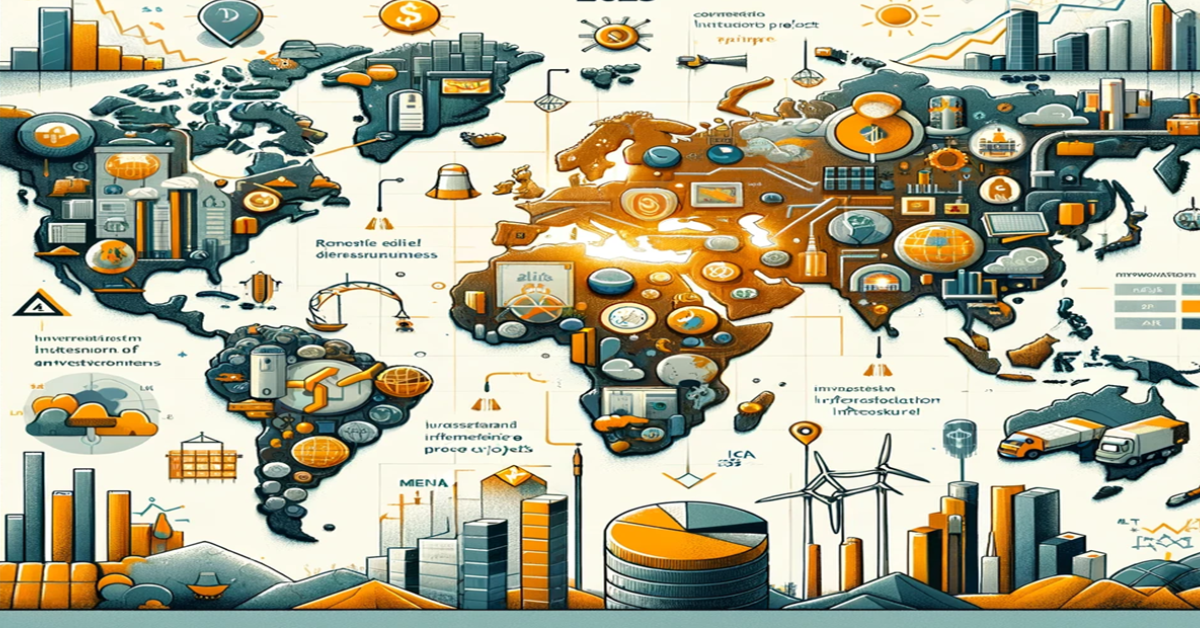World Bank Report: $86 Billion Boosts Global Infrastructure in Low- and Middle-Income Countries
The World Bank's 2023 report highlights private infrastructure investment trends in low- and middle-income countries, revealing $86 billion in investments. Despite a 5% decline from 2022, the investment level aligns with the five-year average. More countries benefited, with investments spread across 322 projects in 68 nations, marking a significant increase from 2022. Key sectors like energy saw substantial growth, particularly in renewable projects. Regions like MENA and EAP showed resilience, with MENA nearly doubling its investment levels. The report underscores the need for private sector participation to address global infrastructure gaps and highlights the World Bank's efforts to facilitate this progress.

In a year marked by economic challenges and a shifting investment landscape, the World Bank has released new data revealing private infrastructure investment trends in low- and middle-income countries for 2023. According to the report, these countries received $86 billion in private infrastructure investment, reflecting a 5% decline from 2022. Despite this dip, the investment level aligns with the average of the previous five years, underscoring a steady flow of private sector participation in infrastructure development.
Expanding Reach and Project Diversity
One of the notable findings from the report is the increase in the number of countries and projects receiving investments. In 2023, a total of 68 countries benefited from private infrastructure investments, spread across 322 projects. This is a significant rise compared to 2022, where 54 countries saw investments in 260 projects. Noteworthy among these were Guinea Bissau, Libya, Papua New Guinea, São Tomé and Príncipe, and Suriname, which secured their first private participation in infrastructure (PPI) transactions in over a decade, marking a historic milestone in their development journeys.
Historical Context and Data Significance
The Private Participation in Infrastructure (PPI) report, a cornerstone of the World Bank's analytical tools, has been tracking investments since 1984. Covering over 10,000 infrastructure projects across low- and middle-income countries, the dataset is a critical resource for monitoring progress and identifying trends in infrastructure financing. As countries worldwide prioritize infrastructure development, this comprehensive database offers invaluable insights into investment patterns and sectoral shifts.
Regional Investment Trends: A Mixed Picture
The report reveals a varied regional investment landscape. While private infrastructure investments saw a general decline across most regions, the Middle East and North Africa (MENA) and East Asia and Pacific (EAP) regions bucked the trend. MENA experienced a remarkable surge, with PPI investment levels nearly doubling from $1.4 billion in 2022 to $2.9 billion in 2023. Meanwhile, the EAP region returned to pre-pandemic investment levels after a three-year hiatus, reflecting a robust recovery from the impacts of COVID-19.
Sectoral Trends: A Focus on Renewable Energy
Energy emerged as a standout sector in 2023, witnessing a threefold increase in investment levels. The bulk of this growth was directed towards the EAP region, aligning with global efforts to combat climate change. Notably, 97% of electricity generation projects in 2023 were renewable, a significant increase from 93% in the previous five-year period. This shift underscores a strong commitment to sustainable energy solutions and reducing greenhouse gas emissions.
Support for the World's Poorest Countries
The World Bank report also highlights significant progress in the world's poorest countries. In 2023, 26 countries that are members of the International Development Association (IDA) received investment commitments totaling $4.3 billion across 53 projects. This marks an 18% increase in investment and sets a record for the number of projects in these nations, showcasing a robust push towards addressing infrastructure gaps in the most vulnerable regions.
Strategic Insights and Future Directions
Guangzhe Chen, Infrastructure Vice President at the World Bank, emphasized the critical role of infrastructure in unlocking human potential and fostering economic growth. He noted that with government budgets under pressure and a vast infrastructure financing gap, private sector participation is essential for delivering crucial projects. The World Bank is committed to facilitating this progress through various initiatives, including public-private partnerships, revamped guarantees programs, and targeted grants to the world's poorest countries.
The PPI report remains a pivotal tool in these efforts, providing a comprehensive view of investment trends, project structures, and the role of multilateral development banks. As infrastructure financing continues to evolve, this database will be instrumental in guiding policy decisions and investment strategies.
Conclusion
The World Bank's 2023 report on private infrastructure investment paints a complex yet hopeful picture of the current landscape. Despite a slight decline in total investments, the broader reach and increased project numbers signal positive trends in regional and sectoral participation. As the global community navigates economic uncertainties, these investments in infrastructure will be crucial for sustainable development and long-term economic stability.










